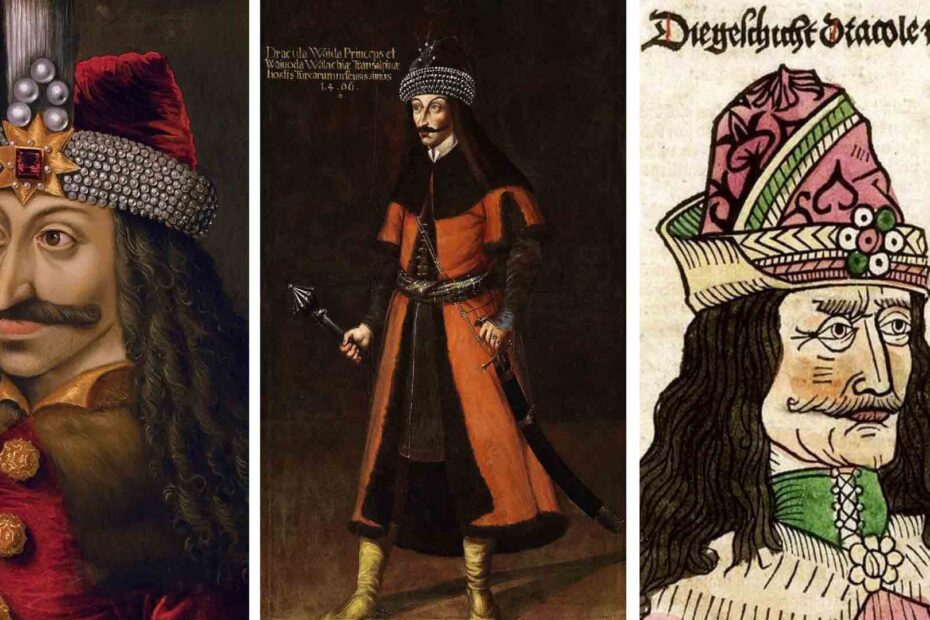Vlad the Impaler, voivode of Wallachia, is undoubtedly one of the most enigmatic leaders in medieval history.
Praised by his supporters for his fanatical resistance against the Ottoman Empire and strict sense of justice.
Demonized by his rivals for the brutal and merciless punishment methods he used for crushing any opposition to his rule.
Besides the myth of “Dracula” what else do you know about Vlad the Impaler?
This list of facts about Vlad the Impaler was created with the intention of covering as many interesting details from the life and rule of the infamous, merciless Wallachian ruler, who terrorized both the Ottoman Empire and his own people.
Without further ado, let’s read together the entire list of interesting facts about Vlad the Impaler:
1. Vlad the Impaler’s grandfather was Mircea the Elder(1355-1418), another great Wallachian voivode, well known for his opposition to Ottoman Expansionism into Europe.

Mircea the Elder gained his fame after his victory against Sultan Bayezid I during the Battle of Rovine(1394-1395) and for his participation in the failed Crusade of Nicopolis.
After 1402, when Bayezid was taken captive by Timur Lenk, Mircea the Elder intervened in the Ottoman Civil War by backing the numerous claimants to the Ottoman Throne.
2. Vlad the Impaler and the Albanian hero, Skanderbeg(Gjergj Kastrioti) have something in common.
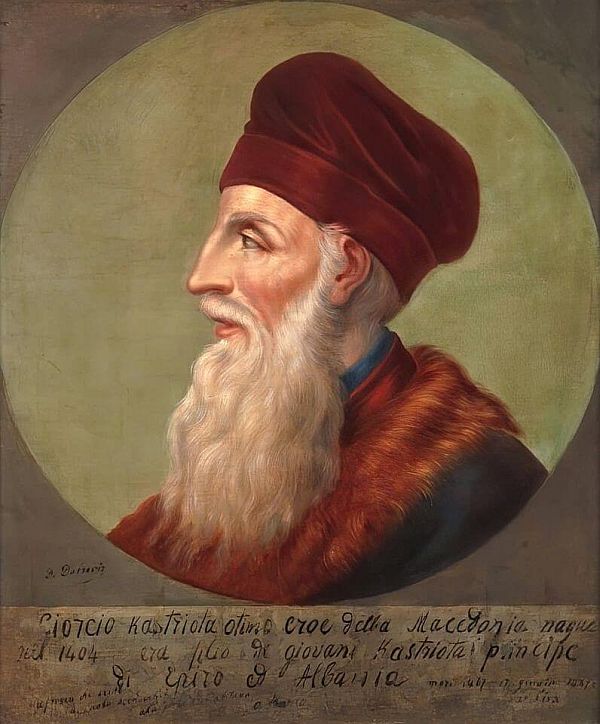
They were both hostages at the Ottoman court and both received the same education that will help them later to better understand and fight the Ottoman Empire.
Skanderbeg like Vlad the Impaler, will also take up arms against the Ottoman Empire and win important victories against them.
3. Many historical sources greatly exaggerate the strength of the Ottoman Army which was sent to punish Vlad the Impaler in 1462.
See below a list of the strength of the estimated forces led by Sultan Mehmed II:
Leonardo III Rocco: 400.000 troops
Tursun Beg: 300.000 troops
Laonikos Chalkokondyles: 250.000 troops
Johannes Antonius: 200.000 troops
Michael Doukas: 150.000 troops
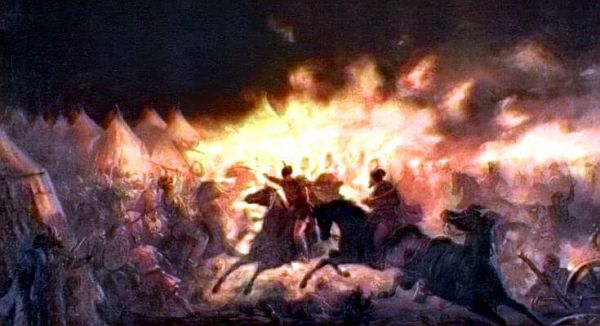
Only Pietro Tommasi offers somehow a closer-to-reality figure of 60.000 soldiers but mentions that 20.000 of them were Jannisaries, which again is exaggerated.
Modern-day historians agree that a realistic figure for the Ottoman invasion force would be 80.000 soldiers.
4. The most exaggerated figure about Vlad the Impaler’s total number of victims is offered by the German chronicler Gerhard Dacher.
According to the claims of the German historian, 179.768 people have been executed at the orders of Vlad the Impaler.
5. Before dying, Vlad II Dracul, Vlad the Impaler’s father, made plans to send his sword to Istanbul where Vlad was then held as a hostage. The message was clear and apparently the sword reached Vlad the Impaler.
When learning about the assassination of his father, Vlad the Impaler swore to take revenge against all those who plotted against his father.
6. In Ottoman chronicles, Vlad the Impaler is often mentioned with the nickname “Kazıklı Bey”(which in Romanian translates as “Printul Tepes”, which in turn means “Prince Impaler”).
In the Ottoman medieval sources, he is mostly known by this nickname, and not Dracula, which was reserved for his father.
7. The biggest internal rival of Vlad the Impaler during his second reign(1456-1462) was a very influential Wallachian boyar called: Ioan Albu.
Ioan Albu(Albu the Great in some sources) dared to stage an open rebellion against Vlad.
Like in many other situations, the Wallachian voivode acted swiftly and decisively to crush the rebellion.
8. His father, Vlad II Dracul, was a knight in the Order of the Dragon, a chivalric order from Eastern Europe with a bold and ambitious goal, to stop the expansion of the Ottoman Empire.
9. He ruled Wallachia with an iron fist during 3 separate reigns (1448;1456-1462;1476).
Ironically, he first took the throne of Wallachia, in 1448, with Ottoman military support.
10. According to modern estimates, Vlad the Impaler’s total kill count is somewhere between 80.000 to 100.000 people.
Side note: It is impossible to provide a precise figure for the total number of people killed by Vlad the Impaler because of 2 important reasons.
a) Lack of historical sources.
b) Historical and other contemporary sources which are either too biased or inaccurate.
11. Vlad the Impaler was a polyglot. He was able to read, write and sometimes even speak German, Hungarian, Latin, Turkish, and Greek.
12. Knowing that he couldn’t defeat the Ottoman Empire in one decisive conventional battle, Vlad the Impaler uses 2 military tactics: scorched earth and guerrilla warfare with maximum efficiency.
The goal of these tactics was to reduce the overall efficiency of the Ottoman Army, by depleting its supplies and lowering the morale of its troops.
13. In the worst-case scenario, if the Ottoman Army was indeed 400.000 troops strong, Vlad the Impaler’s army was overrun by a ratio of 13:1.
If we use the modern-day numbers provided by professional historians, the ratio will be only 3:1 in favor of the Ottomans.

14. The identity of Vlad the Impaler’s mother is not exactly known.
Some historians speculate that it could’ve been Vlad Dracula’s first wife, while others think Vlad the Impaler was conceived with one of the court mistresses.
15. Impaling wasn’t the only method used by Vlad to keep his throne. Vlad the Impaler had also another efficient method to keep control of power.
He would often confiscate the lands of the boyars who were considered to be traitors/unloyal.
The confiscated lands and fortunes were then redistributed among his allies.
16. During his second reign, Vlad didn’t waste time and starts hunting the boyars considered to be responsible for his father’s and brothers’ deaths.
Besides revenge, the purging campaigns against the Wallachian boyars were part of a greater political plan.
By eliminating the influential boyars, Vlad the Impaler hoped to centralize(concentrate) all political power in the hands of the voivode.
17. In 1461, Vlad the Impaler clarified his relations with the Ottoman Empire in a brutal way.

When the Ottoman emissaries demanded tribute from the Wallachian voivode, Vlad ordered that their turbans to be fixed to their heads with nails.
This was an open declaration of war.
It is important though to mention that this episode is not presented in any Ottoman sources, so it is not excluded that it is another fake story, forged by Vlad’s enemies.
18. Despite Vlad the Impaler s numerous requests for support, the King of Hungary, Matthias Corvinus didn’t send any military or financial aid.
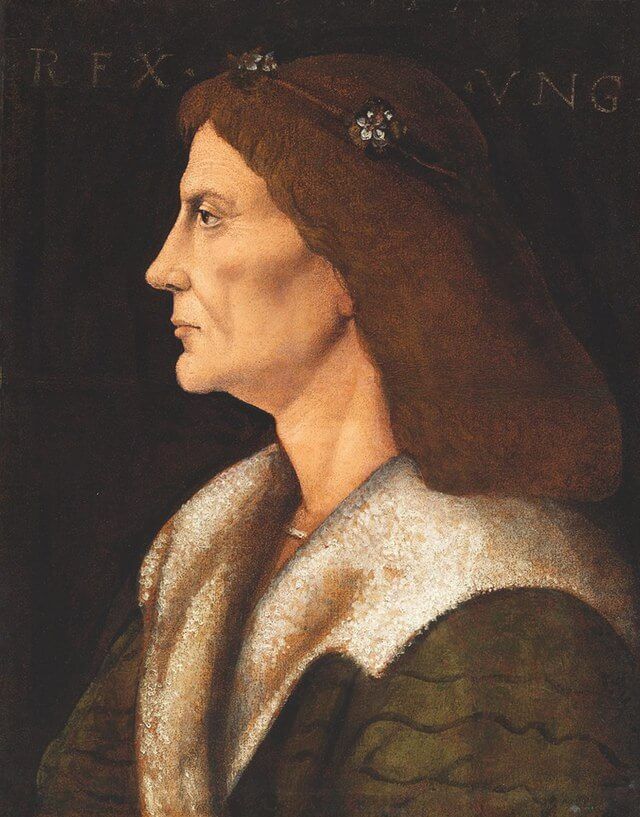
The exact reason for this is not known.
Probably because Matthias Corvinus was distracted by political disputes on other fronts.
19. Stephen the Great rise to power in Moldova was possible thanks to the Wallachian troops(sources differ: 1000 to 6000 total soldiers) sent by Vlad the Impaler to support his cousin.

A bold political move for the Wallachian ruler, given the fact that his country was caught between the Hungarian Kingdom and the Ottoman Empire.
20. After the famous Night Attack, Sultan Mehmed II still refused to give up.
The Ottoman Sultan orders his troops to resume the advance on the city of Targoviste.
Near the city, Vlad the Impaler prepared one last major and gruesome surprise for the Ottoman Army.
The Ottomans were greeted by a forest of 20.000 impaled prisoners.

Upon seeing this horrible, gruesome sight, the morale of the Ottomans plummeted and Mehmed II orders the retreat.
21. Vlad the Impaler’s name is first mentioned in an official document on January 20, 1437.
This is exactly six years after his known birthday.
22. During the winter of 1461, when Mehmed II finally learns about Vlad the Impaler’s secret alliance with the Hungarians, the Ottoman ruler initially plans to capture the Wallachian ruler and bring him to Istanbul.
The Ottoman plan terribly backfires. Vlad the Impaler anticipates the trap and sets one of his own.
The small Ottoman unit led by Hamza Bei and Katabolinos is surrounded, quickly overrun and all its troops impaled.
23. After skilfully dodging the Ottoman trap, Vlad and his army immediately advances to the Ottoman-controlled town of Giurgiu.
Vlad the Impaler uses his advanced knowledge of the Turkish language and successfully tricks the Ottoman guards to open the gates of the city.
From here we all know what comes next, the local Ottoman garrison was overrun and butchered by Vlad the Impaler and the brave Wallachian army. During this attack, 6414 people have been killed, according to Vlad’s own claims.
24. Vlad the Impaler would often disguise himself so he can spy on the boyars and his common subjects, who were considered to be suspicious or disloyal.
25. When he first took the throne of Wallachia in the year 1448, Vlad was only 17 years old.
26. Despite being abandoned by most of the Wallachian boyars, Vlad the Impaler, and the remnants of his army obtain one last victory against his brother, Radu, in October 1462.
27. Contrary to popular belief, Bran Castle was not Vlad the Impaler’s main citadel/home.
In reality, Poenari Citadel was the main citadel of the infamous Wallachian ruler.

28. Vlad the Impaler was one of the few European rulers who answered Pope Pius II‘s appeal for a new Anti-Ottomann Crusade.
During the Communist regime in Romania, many historians attempted to present Vlad the Impaler’s actions as being completely independent or even alone against the Ottoman Empire, which is not exactly the case.
Vlad the Impaler wasn’t even at the center of Pope Pius II’s crusading plans. According to the plans of the Pope, Matthias Corvinus should’ve played the leading role in this crusade.
In reality, Matthias Corvinus didn’t organize nor led the army against the Ottomans, but he took credit and profit from Vlad the Impaler’s achievements against Mehmed II and presented them as his own ideas.
In return, the Hungarian King continued to receive funds from the Pope.
29. According to a lesser-known historical document, written by Cezare of Florence, a merchant, the Wallachian army led by Vlad the Impaler manages to burn an Ottoman transport fleet of 50 ships that were stationed on the Danube.

The Ottoman transport ships were on the Danube to transport a vital resource: timber.
This precious resource would’ve been used for the production of war galleys.
This event took place in March of 1462.
30. According to one of the many legends surrounding Vlad the Impaler’s life; during a purge of the Wallachian boyars, the older boyars were impaled, while the younger ones with their wives were forced to march 50 miles without stopping, then work at the reconstruction works of Poenari Castle.
31. Only 2 boyars, from Vlad the Impaler’s voivode council, manage to remain alive and also keep their positions between 1457 and 1461.
32. Did Vlad the Impaler ever know how to forgive? The short answer is yes and there are 2 important examples: John Hunyadi(involved in the deposition and assassination of his father, Vlad Dracul) and Stephen the Great.
Both of them betrayed, or attacked Vlad the Impaler at some point, but will later become close allies of the Wallachian ruler.
33. After being arrested at the orders of Matthias Corvinus, Vlad spent 12 years in prison in the Visegrad fortress, then his sentence was commuted to “house arrest” in the city of Buda.
Contrary to many views, Vlad, the Impaler didn’t suffer too much during his prison years.
34. Despite being victorious on the battlefield, in 1462 Vlad the Impaler runs to Transylvania in an attempt to obtain additional military and financial support from Matthias Corvinus, king of Hungary.
Instead of military support against the Ottomans, the Hungarian king orders the arrest of the Wallachian ruler.
Taking advantage of the situation, the Ottomans install Radu, Vlad’s younger brother, on the throne of Wallachia.
35. The decisive fight between Vlad the Impaler and Vladislav II took place near the village of Targsor in 1456.
Vlad the Impaler’s army decisively defeats the forces of his rival and thus the second reign(1456-1462) of Wallachian voivode begins.
36. A lesser-known detail, but not uncommon for the Romanian medieval rulers was that they often swore allegiances to both the King of Hungary and the Ottoman Sultan at the same time.
This was also the case of Vlad the Impaler, who in 1456 swore allegiances almost at the same time to both the Sultan and the King of Hungary.
This political move allowed him to buy time for consolidating his rule.
37. Vlad the Impaler had many commercial disputes with the Saxon merchants from the cities of Brasov and Sibiu.
The merchants from the previously mentioned cities often supported claimants and usurpers against Vlad’s rule.
As punishment, Vlad the Impaler often raided and looted the villages and trade routes near these cities.
38. During the anti-Ottoman military campaign(winter of 1461-1462) Vlad the Impaler and the Wallachian army seized the military initiative by pillaging the Ottoman-controlled villages and cities south of the Danube.
According to some calculations, Vlad’s army covered nearly 700 km, which is unlikely and that is why other experts think that it is more likely that several attacks could’ve been organized at the same time.
39. Vlad the Impaler himself wrote the total number of people eliminated by his army during the preemptive strike.
In an official letter to King Matthias Corvinus, Vlad the Impaler speaks about 23.884 people killed during this military campaign.
Even this figure is an estimate because according to the Wallachian prince, the people from the burned buildings were not counted.
40. Being unable to defeat Vlad’s army in the open field, Mehmed II and his army retreat from Wallachia, but unfortunately for the Wallachian ruler, the Ottoman Sultan had one last trick.
If the Ottoman army wasn’t able to defeat Vlad the Impaler, then his brother Radu the Handsome could do the job.
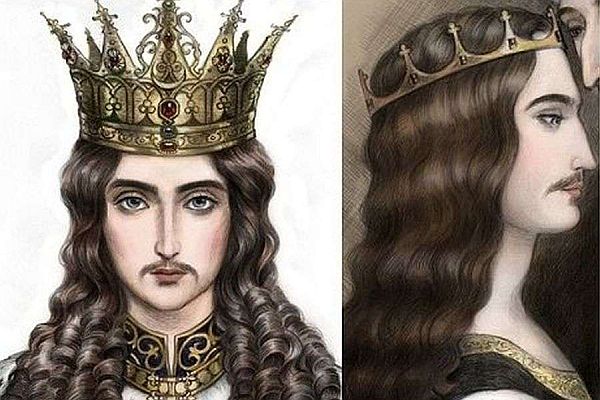
Radu the Handsome will achieve in a matter of months, with the help of disloyal boyar factions and a small ottoman unit, what the Ottoman army led by Mehmed II was not able.
By October 1462, nearly 4 months after Vlad the Impaler’s daring Night Attack, the infamous Wallachian ruler was again ousted from power.
41. There is a claim which is popular on the internet, that Vlad the Impaler pioneered the use of biological warfare by intentionally sending people who were suffering from plague or leprosy inside the Ottoman camps.
It is important to note that this theory doesn’t have strong support in medieval historical sources.
Many historians like Chalkokondiles, Critobulus of Imbros, and Doukas only mention the use of guerrilla and scorched earth tactics against the Ottoman advance in Wallachia during June of 1462, but no word about the use of any form of germ warfare or something similar.
This, however, doesn’t mean that the Ottoman army wasn’t affected by diseases as a consequence of the scorched earth tactics.
42. Vlad the Impaler’s first wife had a very sad ending. The story tells that when the Ottomans laid siege to the fortress where she took shelter and knowing that there is no escape route, Vlad’s first wife decides to throw herself from the walls of the castle rather than risk being captured by the enemy.
There is also another version of the legend, the first wife of Vlad the Impaler decided to end her days, by throwing herself from the top of the walls of the Poenari citadel, because she learned that the Wallachian ruler had an affair with a much younger woman.
43. Contrary to popular belief, Vlad the Impaler and his army didn’t organize only one single Night Attack.
What is more interesting, is that even pro-Ottoman historical sources(Tursun Beg, Chalkocondjles, ), speak about at least 3-night attacks organized by the Wallachian army during the difficult campaign in June 1462.
44. How did Vlad The Impaler really look like?
There are several portraits done by Westerners, most of them created to mock him for propaganda purposes, because of the many stories spread by the Saxons.
There is only one description of the real person done by the pope’s emissary Niccolò Modrussa, visiting Vlad while he has unrightfully imprisoned by Mathia Corvin:
“[Vlad] was not very tall, but very stocky and strong, with a cold appearance, a strong and aquiline nose, a thin face in which the very long eyelashes framed large wide-open green eyes; His face and chin were shaven, but for a mustache. The swollen temples increased the bulk of his head. A bull’s neck connected [with] his head from which black curly locks hung on his wide-shouldered person.“

45. The daring assassination attempt on Sultan Mehmed II was not an original or unique idea of Vlad the Impaler.
Most likely, Vlad the Impaler learned about the assassination of Sultan Murad I during the Battle of Kossovopolje(1389) and decided to take the shoot.
46. You may think that because he was supported by Vlad the Impaler during his fight to claim the throne of Moldavia, Stephen the Great would remain eternally grateful to the Wallachian voivode. Think again.
Exactly at the same time, when Vlad the Impaler was fighting Mehmed II, in June 1462, Stephen the Great decides to attack the strategically important city of Chilia.
The city was protected by a Hungarian garrison, so Vlad as the vassal of Matthias Corvinus had to send troops to defend it.
Fortunately for Vlad the Impaler, the garrison of the city repels the combined attack of Steven the Great and the Ottomans.
47. To justify the imprisonment of Vlad the Impaler, Matthias Corvinus used forged letters that allegedly show that the Wallachian ruler started secret peace negotiations with Sultan Mehmed II.
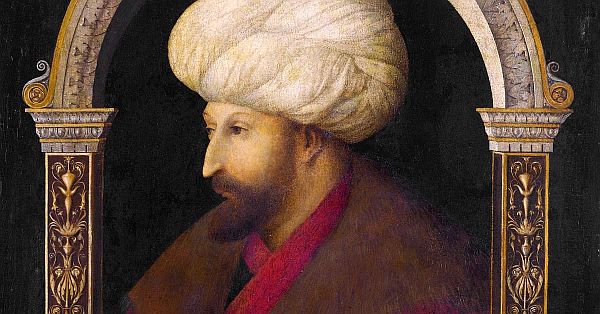
Most likely, the fake letters were forged with the help of the Saxons who hated Vlad the Impaler and wanted to take revenge.
Allegedly, in those fake letters, Vlad the Impaler started secret negotiations with the Ottoman Sultan and even agreed to attack Hungary together.
We all know today, that Matthias Corvinus wasn’t very enthusiastic to join an anti-Ottoman crusade so these fake letters provided the needed justification/legitimacy for his actions.
48. For many years, some Romanian historians, supported the idea that due to the size of the Ottoman invasion army, the goal of Mehmed II’s expedition was the conquest of Wallachia.
In fact, Mehmed II appointed Radu the Handsome as the new ruler of Wallachia before the start of the campaign, so it is more likely that the main objective was only to change the current political regime.
49. It is often said that old habits die hard.
In Vlad the Impaler’s case seems to be true, even during prison time in the Visegrad fortress, the evil ruler didn’t give up on his sadistic habits.
He even goes as far as impaling mice and birds on small stakes.
50. The exact location of Vlad the Impaler’s tomb is still a mystery. For many years historians, and archeologists thought that his tomb was located either in the Monastery of Snagov or in Comana. Recent researches reveal that his body is not located in either of the monasteries.
51. There is a theory regarding the ending of Vlad the Impaler which is not supported by either historical documents or modern-day historians.
According to this theory, Vlad might have escaped alive from his last battle and is saved by a relative who offers to pay the ransom.
The researchers claim that Vlad the Impaler was taken prisoner by the Ottomans, and then ransomed by his daughter, who lived in Italy. After being ransomed, Vlad is brought to Italy, where he spent the rest of his days.
A Ph.D. history student discovered a tombstone in Santa Maria La Nova Square, which allegedly belongs to Vlad the Impaler. The medieval researchers consider that the images and symbols from the tomb have their origins in Transylvania, being atypical for an Italian one. Currently, the tomb is still being investigated, no definitive conclusion.
52. Vlad the Impaler completely eradicated poverty in Wallachia...in his own brutal way.
According to one of the many stories spread by the Saxons, the Wallachian ruler organized a feast for all beggars; vagabonds and crippled from his Kingdom.
During the feast, Vlad’s guards closed all the doors and set fire to all the buildings.
As you may have anticipated, nobody escaped alive.
53. Vlad the Impaler never offered a clear or rational reason for all his evil practices and mass purges/genocides.

However, an explanation of the cruelties of Vlad the Impaler, given by himself, has been preserved.
His words were preserved in a letter from Bishop Gabriel of Verona, who says that, on the occasion of a war in Bosnia, cut the Turks to pieces with his hand (as the Saxons also said, “he himself cut people like cabbages”) and impaled saying: “When the Turks will come and see these, they will run away in fear!”.
54. Vlad the Impaler is initially described by Chalkokondyles as a “reformer“
You may wonder how Vlad attempted to reform Wallachia.
The answers are monetary reform, trade protectionism, and limitation of the boyar privileges.
It is important to mention, that due to the military events that occurred during his reign, none of these reforms had long-term effects/consequences.
55. According to a more recent theory about the last days of Vlad the Impaler, Sultan Mehmed II used the same military strategy that proved to be effective against Vlad’s cousin, Stephen the Great, the Moldavian ruler.

It is likely that before Laiota Basarab started his attack from Southern Wallachia, Mehmed II ordered a force of Tatar horsemen to attack Wallachia from the East to distract the bulk of Vlad the Impaler’s army.
This attack had a diversionary role, so it can facilitate the success of the main attack led by Laiota Basarab.
56. According to a legend, during his second reign, Vlad the Impaler decided to test if his punishments were indeed effective.
To do this, he placed a golden cup near a well located in the center of the city of Targoviste(at that time the capital of Wallachia). The medieval population of the city was estimated at around 60.000 people.
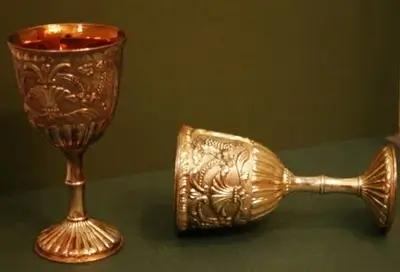
According to the same legend, the cup never disappeared. Even more important, the locals didn’t dare to touch it, fearing that they will be punished by the merciless Wallachian voivode.
57. An international team of Romanian and German historians succeeded in creating a very accurate replica of Vlad the Impaler’s seal.

58. If we take for granted the words from the Saxon and Slavic stories, Vlad the Impaler was also a cannibal.
59. Each year, in the Serbian village of Torac, the locals organize Dracula Fest, a festival dedicated to Vlad the Impaler.
According to their local legends, Vlad the Impaler encamped nearby during one of his many military campaigns against the Ottomans and even fall in love with a local Serbian woman.
Off course, like many other legends, it is impossible to verify its accuracy with historical documents, but this didn’t stop the present-day Serbians from the village from considering themselves descendants of the Wallachian ruler.
60. Westerners often associate Romania, and Transylvania with Dracula, the vampire. What are the origins of this name? The first to be associated with Dracula, or rather Drăculea, was Vlad II, the father of Vlad the Impaler.
The name Dracula has its origin in his father’s name, Vlad Dracul, also known as Vlad the Dragon, a name he received after becoming a member of the Order of the Dragon.
By being accepted into the Order of the Dragon, automatically his sons also inherited the legacy/nickname.
In modern Romania, the word Drac means “Devil“, and this also contributed to Vlad the Impaler’s infamous reputation.
61. Some people speak about the existence of a treasure that belonged to Vlad the Impaler. Allegedly the Wallachian rule hid the vast treasure in time, before the arrival of the Ottoman invasion force in Wallachia.

This story like many others about Vlad the Impaler is hard to check, and even more important, no treasure that belonged to him was even discovered.
62. For those interested to learn more details about the real life of Vlad the Impaler, there is a scientific team called Corpus Draculianum, made of German and Romanian historians.
The noble goal of this research team is to find, edit and publish all historical sources/documents related to Vlad the Impalers’ rule.
To this date, several biographies and books have been published.
For those who don’t have time to read, Corpus Draculianum even has a Youtube Channel.
63. After the victorious Night Attack, the Wallachian Army ambushes the retreating Ottoman Army at the end of June 1462 and obtains one last important victory near the city of Buzau.

64. Before leaving to fight the Ottoman armies led by Mehmed II at Belgrade (July 1456), John Hunyadi gave Vlad the Impaler a crucial task.

Vlad was left in charge of Southern Transylvania against any potential Ottoman flanking maneuvers.
Without knowing, or maybe it was with intention, John Hunyadi, facilitated the start of Vlad the Impaler’s second reign.
Sensing the opportunity given by the Siege of Belgrade, Vlad takes advantage of the situation and marches into Wallachia, and quickly defeats his rival Vladislav II.
65. Vlad the Impaler didn’t invent impaling as a torture method. This punishment was in fact created during Ancient times, probably around the 18th Century BC.
The Wallachian ruler just took this torture method to a completely new scale.
66. Former Queen Elizabeth II and the present-day King Charles III are descendants of Vlad the Impaler.
King Charles is Vlad’s great-grandson 16 times removed through King George V’s consort Queen Mary.
For the exact genealogical tree which shows the link between the “House of Windsor” and “House of Draculesti” see the below infographic.
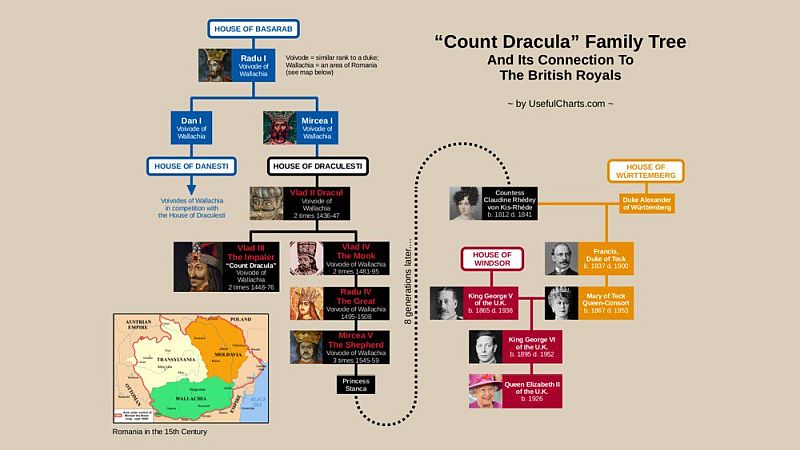
67. The duel between Vlad the Impaler and Sultan Mehmed II from the Netflix series: Rise Of Empires: Ottoman Season 2 never took place, it is just an invention by the movie producers.
Historical sources only mention that Vlad attempted during the Night Attack to assassinate the Ottoman ruler, but unfortunately for him, he misses the target. After the failed assassination attempt Vlad with his army successfully flee under the cover of night.
68. Another exaggeration from the show Rise Of Empires: Ottoman: the close relationship between Vlad the Impaler and Mehmed II.
Vlad and the Ottoman Sultan were never in good relations. Yes, Vlad the Impaler was for many years captive at the Ottoman court and maybe he even meet Mehmed when he was only a Prince, but this is far from the idea of a brotherly relationship.
Even more important, Mehmed II allegedly had a closer relationship with Vlad’s brother, Radu the Handsome, who, unlike Vlad, converted to Islam and was integrated more quickly.
69. For many years, some Romanian military historians insisted that the majority of the soldiers from Vlad the Impaler’s army were peasants with little military training and that the Wallachian voivode didn’t have mercenaries.
Recent studies, show the exact opposite, not only that the Wallachian army didn’t rely on mass mobilization of the people, but Vlad also had a skilled force of mercenaries.
70. Like his entire life and rule, Vlad the Impaler’s death is also filled with controversy and mystery. There are many scenarios about the last days of the infamous Wallachian ruler. From being stabbed by a paid Ottoman assassin or killed by mistake by his own soldiers.
The real chain of events that led to the death of Vlad the Impaler is still uncertain.
Conclusion
Through this list of facts about Vlad the Impaler, we have attempted to cover as many interesting details and facts as possible about the rule, life, and achievements of the controversial Romanian voivode which will later become the source of Bram Stoker’s “Dracula”. If some of these facts from the list are not accurate, feel free to leave a comment and we will check.
Even better, if you know more facts about Vlad the Impaler, let us know and we will update this list.
Sources and further reading:
- Neagu Djuvara, From Vlad the Impaler to Dracula the Vampire; translated by Alistair Ian Blyth
- Ştefan Andreescu; Vlad the Impaler(Dracula).
- Nicolae Stoicescu, Vlad Tepes Prince of Wallachia.
- Youtube channel link: https://www.youtube.com/@CorpusDraculianum
- Vlad the Impaler: A Captivating Guide to How Vlad III Dracula Became One of the Most Crucial Rulers of Wallachia and His Impact on the History of Romania (Biographies) by Captivating Histories
- Vlad the Impaler: A Life From Beginning to End (Medieval History) by Hourly History.
